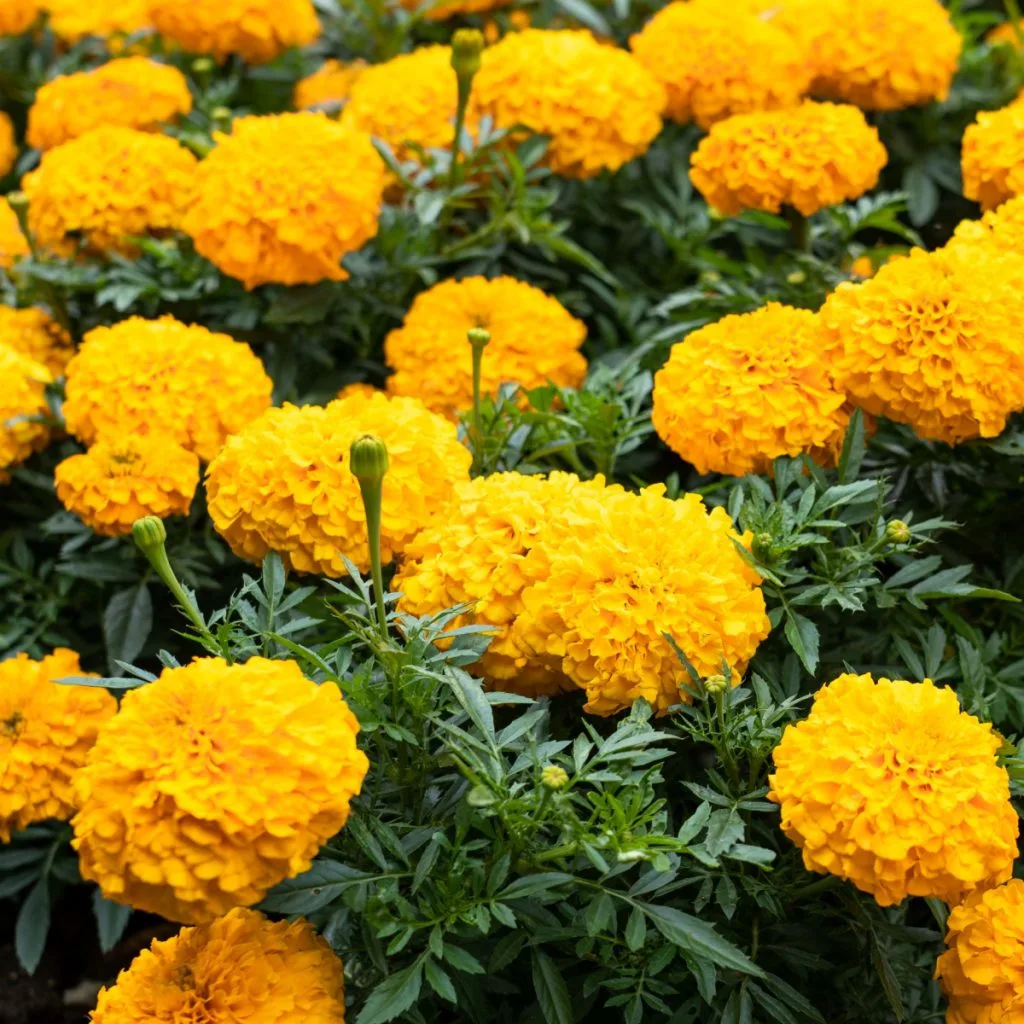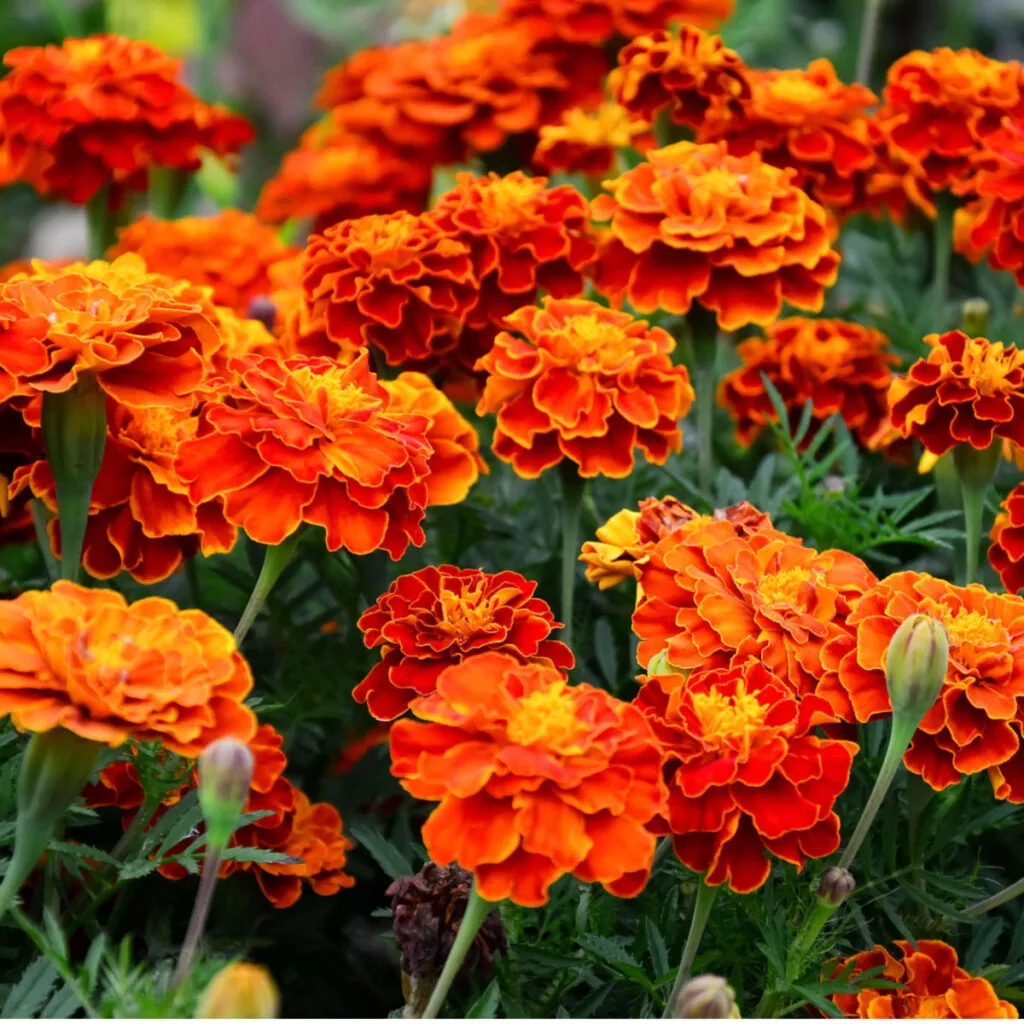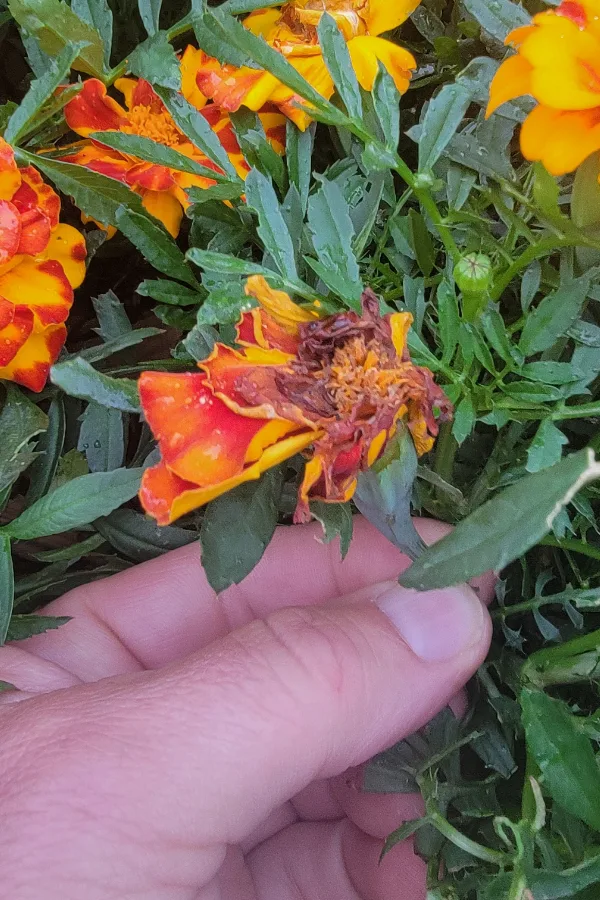Looking for the secret to fertilizing marigolds to keep them blooming big, strong and bright all summer long?
Marigolds are one of the easiest and most rewarding flowers to grow, but if you really want them to shine all season long, proper fertilizing is the key. Although marigolds are annuals that only grow for a single season, they can bloom almost nonstop from early summer until fall. That is – as long as they are fed correctly.
Like many flowering annuals, they put a lot of energy into creating flowers. That’s especially true when planted in pots or containers where soil nutrients are limited. Once they use up what’s in the soil, they will stop blooming unless you step in to give them the nutrition they need. That’s where knowing how to fertilize them properly can make all the difference!

With flowering marigold success in mind – here’s a look at exactly how and when to fertilize your marigolds, what kind of fertilizer works best, and why using the right method and schedule can keep your plants healthy, full, and blooming big all summer long.
Fertilizing Marigolds For Big Blooms!
The Best Fertilizer For Marigolds – Low Nitrogen, High Bloom Power
When choosing a fertilizer for marigolds, it’s important to pick one that encourages flower production – not just green leaves and growth. Unfortunately, this is where many gardeners go wrong.
A fertilizer with too much nitrogen will cause marigolds to grow tall and leafy, but you’ll see fewer blooms. Instead, to keep your marigolds flowering, you want to use a liquid fertilizer that has a lower nitrogen number and a higher level of both phosphorous and potassium. These are the second and third numbers listed on a fertilizer package.
Phosphorous is the key nutrient for building more and bigger blooms. It powers the development of flower buds and helps the plant use its energy to keep blooming again and again.
Potassium, meanwhile, helps plants stay healthy overall and makes them more resilient to heat and drought. It also supports strong stems and better root systems. Together, the two do wonders to keep your marigolds flowering in full color!

So what is the best ratio to look for? Ideally, look for fertilizers with two to three times the amount of phosphorous and potassium to nitrogen to get marigolds blooming at their full potential. Affiliate Link: EZ-GRO 10-30-20 Blossom Booster Fertilizer – Liquid Plant Food
How To Apply Liquid Fertilizer – Fertilizing Marigolds The Right Way
Liquid fertilizer works best for marigolds because it gets absorbed quickly through the roots and the leaves. It starts working fast and gives plants a quick burst of energy. But it’s important to apply it the right way. That means not too much – and not too little.
Instead of using full-strength liquid fertilizer every couple of weeks, try this simple method: mix your liquid fertilizer at half strength and apply it every 7 to 10 days. This gentle feeding gives marigolds a steady stream of nutrients. All without overwhelming the plant or causing it to grow too large.
Feeding with full-strength fertilizer can sometimes cause plants to grow too fast. They may become tall, thin, or leggy with fewer flowers. By diluting the fertilizer and applying it more often, you give the plant just enough power to keep blooming without encouraging too much green growth.
It’s like giving your marigolds small, regular meals instead of one big feast every few weeks!
Listen Below On Our Podcast About All The Benefits Of Growing Marigolds!
Why Deadheading Is Just As Important As Fertilizing
Even with perfect fertilizing, marigolds need one more simple task to keep blooming strong- and that task is deadheading. Deadheading is the process of removing old, spent blooms from the plant. It may seem like a small thing, but it makes a huge difference for marigolds!
When a bloom dies and stays on the plant, it begins to form seeds. Once this process starts, the marigold shifts its energy into seed production instead of creating more flowers. That’s bad news if you want a long season full of color.
But by removing those old flowers, you trick the plant into thinking it still needs to bloom. It keeps putting energy into making new buds instead of seeds. Also see our article: How To Deadhead Marigolds – The Secret To Get Your Marigolds To Bloom Big!
Deadheading is easy to do. Simply pinch off the flower right where it meets the stem, just above the next set of leaves. You can also use small garden scissors or small pruners for a quick, clean cut.
Check your marigolds every few days and snip off any flowers that look faded, dried out, or have turned brown. By staying on top of deadheading, your plant can keep reblooming over and over.

A Few Extra Marigold Care Tips For Bigger Blooms
While fertilizing and deadheading are the two biggest ways to help your marigolds bloom big, there are a few other simple tips that can help your plants stay healthy and strong.
First, make sure your marigolds are growing in full sunlight. These flowers love the sun and need at least six to eight hours each day. If they are in too much shade, they will grow leggy and thin, and blooms will be limited.
Second, water consistently. Marigolds don’t like soggy soil, but they also don’t like to be completely dry for long periods. Try to keep the soil lightly moist, especially during hot weather.
With a little attention and regular fertilizing, your marigolds will reward you with waves of bright, beautiful blooms from spring – all the way to fall! For more tips on keeping annual flowers blooming big, check out our article: The Best Way To Fertilize Hanging Baskets In Summer – Bring Your Flowers Back To Life!
Simple Garden Life
Follow Our Facebook Page For Even More Great Tips! Simple Garden Life Facebook Page
Simple Garden Life is a website dedicated to keeping gardening fun, simple and enjoyable! We publish two new articles each week along with a new garden podcast episode every two weeks. This article may contain affiliate links.
